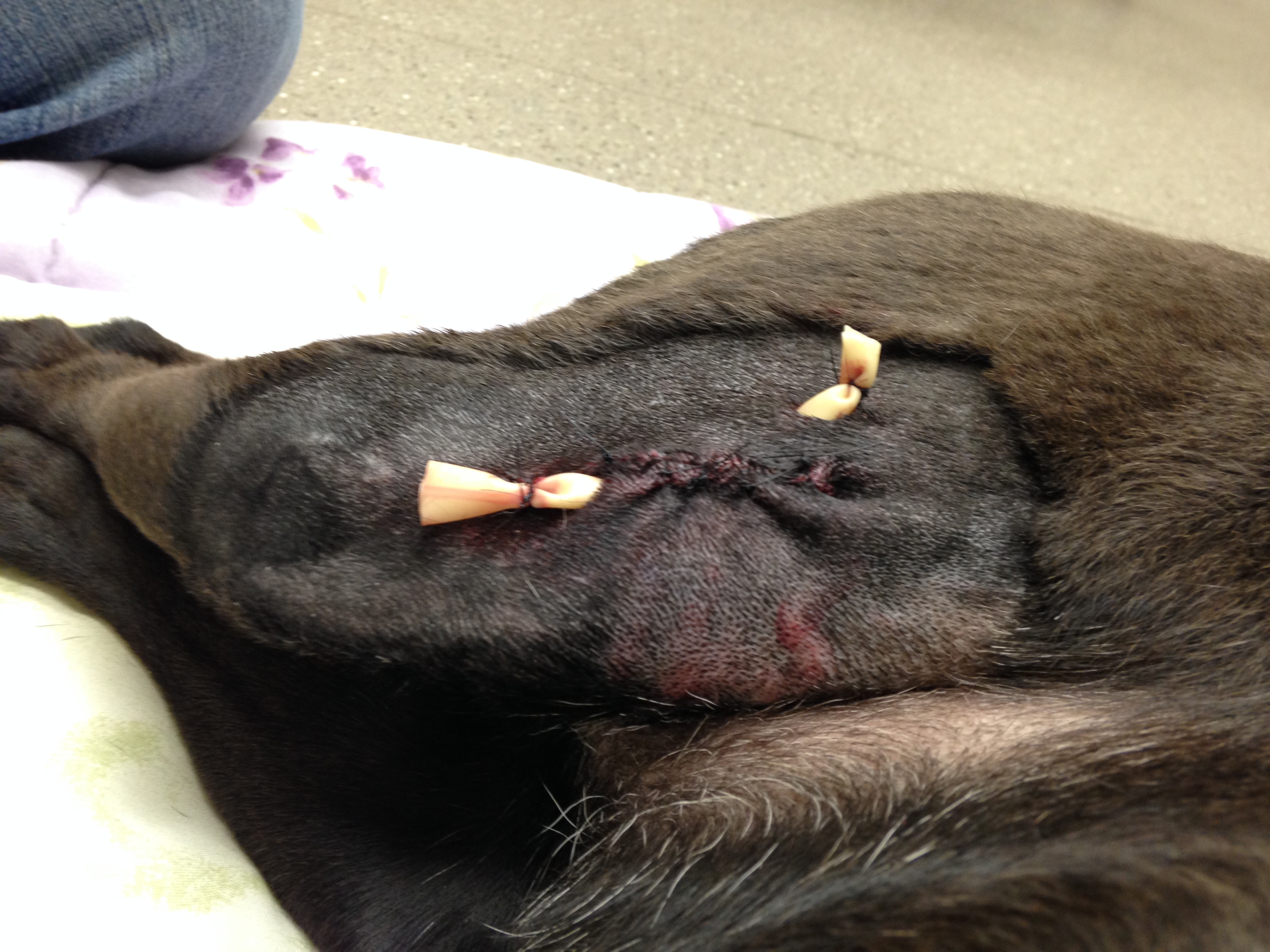If your dog was bitten by another dog but there is no blood, it’s important to still seek veterinary care to check for any potential underlying injuries or infections. Even if there are no visible wounds, it’s possible that the bite could have caused damage beneath the skin.
Experiencing a dog bite incident can be distressing, but it’s important to remain calm and focus on the well-being of your pet. Contact your veterinarian as soon as possible for an assessment and appropriate treatment. While there may not be immediate signs of injury, there could still be internal bruising or issues that need attention.
By seeking prompt veterinary care, you can ensure the best outcome for your pet’s health and recovery.

Credit: paws4udogs.wordpress.com
Understanding Dog Bites
Getting bitten by another dog can be a distressing experience for both dogs and their owners. While the absence of visible blood may bring some relief, it’s important to understand dog bites and their potential dangers.
Types Of Dog Bites
Dog bites can vary in severity and impact, and it’s essential to differentiate between different types of dog bites:
- Superficial bites: These are shallow bites that may not break the skin but can still cause discomfort and potential infection.
- Puncture wounds: These bites occur when a dog’s teeth penetrate the skin, leaving small puncture holes that require careful cleaning to prevent infection.
- Deep bites: Deep bites can reach muscles, tendons, or bones, potentially causing severe injury and requiring immediate medical attention.
Common Causes Of Dog Bites
Various factors can contribute to dogs biting others. Understanding the common causes can help prevent future incidents:
- Territorial aggression: Dogs protecting their territory may bite to ensure their perceived boundaries are respected by intruders.
- Fear or anxiety: When dogs feel threatened or terrified, they may resort to biting as a defensive response.
- Protecting resources: If a dog feels its possessions, such as food, toys, or even their owners, are being threatened, it may bite to protect them.
- Pain or illness: Dogs in pain or suffering from certain illnesses may lash out through biting as a means of communication or self-protection.
Assessing The Bite
Assessing the bite on a dog after being bitten by another dog is crucial for determining the severity of the situation and providing appropriate care. It’s important to look out for visible injuries and behavioral changes to ensure your pet’s well-being.
Visible Injuries
When assessing a dog bite, start by examining the affected area for any visible injuries such as puncture wounds, bruises, or redness. Check for signs of swelling, bruising, or broken skin, and assess the size and depth of the bite. Take note of any specific parts of the body that are affected, and if there are multiple bite marks.
Behavioral Changes
Observe your dog for any behavioral changes following the bite. Look for signs of discomfort, agitation, or fear. Monitor their eating habits, mobility, and energy levels. Note any unusual reactions to touch or movement, and pay attention to any signs of anxiety or aggression that may have developed after the incident.
Immediate Actions To Take
When your dog is bitten by another dog, it can be a frightening experience. Even if there is no visible blood, it’s crucial to take immediate action to ensure your pet’s well-being. Here are the essential steps to follow after such an incident:
Rinsing The Wound
The first step is to carefully rinse the wound with mild soap and warm water. This will help clean the area and reduce the risk of infection. Pat the wound dry with a clean towel.
Applying First Aid
After rinsing the wound, apply an over-the-counter antibacterial ointment to the affected area. This will further aid in preventing infection and promoting healing. Keep an eye on the wound for any signs of redness, swelling, or discharge, as these could indicate an infection that requires immediate veterinary attention.
Monitoring For Potential Complications
After your dog has been bitten by another dog, it is important to closely monitor their condition for any potential complications. While there may be no visible blood, the bite wound could still lead to various issues that require medical attention. By being vigilant and understanding the signs of infection and delayed onset symptoms, you can take proactive steps to ensure your furry friend’s well-being.
Signs Of Infection
Keeping an eye out for signs of infection is crucial after your dog has been bitten. Even without visible blood, the bite wound can be a breeding ground for harmful bacteria. Watch for these symptoms:
- redness or swelling around the wound
- increased warmth in the area
- pus or discharge
- unpleasant odor
- your dog showing signs of pain or discomfort
If you notice any of these signs, it is important to contact your veterinarian promptly. Prompt treatment can prevent the infection from worsening and spreading.
Delayed Onset Symptoms
While some symptoms of a dog bite may manifest immediately, others may have a delayed onset. It is crucial to be aware of these delayed symptoms as they can indicate underlying complications. Look out for the following:
- lethargy or decreased activity
- loss of appetite
- swollen lymph nodes
- fever
- changes in behavior or temperament
If you observe any of these symptoms occurring after the dog bite incident, it may signify a more serious underlying issue. Contact your veterinarian as soon as possible so they can assess the situation and provide appropriate treatment.
Seeking Veterinary Care
When your dog is bitten by another dog, it can be a worrying and distressing situation. Even if there is no visible blood, it is still essential to seek veterinary care to ensure the wellbeing of your furry friend. Consulting a vet will help determine the seriousness of the bite and provide appropriate treatment options.
When To Consult A Vet
If your dog has been bitten by another dog, it is important to consult a vet immediately. While there may not be any visible blood, the bite could still have caused internal injuries or may become infected over time. It is always better to err on the side of caution and have a professional examine your beloved pet.
Treatment Options
Once you have consulted a vet, they will be able to assess the extent of the bite and recommend the appropriate treatment options. These may include:
- Antibiotics: The vet may prescribe antibiotics to prevent infection and promote healing.
- Pain medication: If your dog is experiencing pain or discomfort, the vet may prescribe pain medication to alleviate their symptoms.
- Wound care: Keeping the bite area clean and properly bandaged is crucial to prevent infection and aid in healing. The vet will provide instructions on how to care for the wound at home.
- Monitoring: After the initial treatment, it is important to monitor your dog closely for any changes in behavior or signs of infection. If you notice anything unusual, it is crucial to contact your vet right away.
Remember, even if there is no visible blood, it is crucial to seek veterinary care when your dog is bitten by another dog. Acting promptly and following the advice of a professional will ensure that your beloved companion receives the necessary care and treatment for a full recovery.

Credit: www.wikihow.com

Credit: www.northeast-vet.com
Frequently Asked Questions Of My Dog Was Bitten By Another Dog But No Blood
Can A Dog Get Infected If Bitten By Another Dog With No Blood?
Yes, dogs can still get infected even if there is no visible blood. Dog bites can introduce bacteria into the skin, leading to infection. It is important to keep an eye on the bitten area, clean it thoroughly, and monitor any signs of infection such as redness, swelling, or discharge.
What Should I Do If My Dog Is Bitten By Another Dog Without Blood?
If your dog is bitten by another dog without any visible blood, you should still take proper precautions. Clean the wound with mild soap and water, apply an antibiotic ointment, and monitor for signs of infection. It’s also essential to contact your veterinarian to ensure your dog receives any necessary vaccinations or further medical treatment.
Can A Dog Transmit Diseases Through A Bite Without Blood?
Yes, diseases can still be transmitted through a dog bite even without the presence of blood. Bacteria, viruses, and other pathogens can be present in the saliva of the biting dog and can be transferred to the wounded dog. It is always advisable to seek veterinary attention to assess the risk of disease transmission and take appropriate measures.
Conclusion
Dog bites can result in harm even if there is no blood. It’s crucial to closely monitor your dog’s behavior and seek veterinary attention if necessary. Remember, prevention is the best approach, so be proactive in training and socializing your dog to avoid potential conflicts.
Keeping a safe distance from unfamiliar dogs is also recommended. Stay vigilant and prioritize your furry friend’s well-being.



